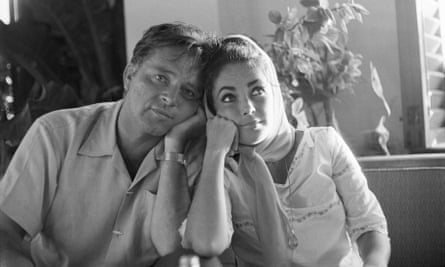Heavenly powers or something rotten? When Richard Burton played Hamlet | Theatre
[ad_1]
In 1964 Richard Burton played Hamlet on Broadway in a modern-dress production directed by John Gielgud. By commercial standards, it was a roaring success: it ran for 17 weeks, breaking a record previously held by Gielgud himself, and was packed out every night. But, for many of those involved, it was not a happy experience. And that is the subject of a new play by Jack Thorne, The Motive and the Cue, which starts previewing at the National Theatre in April, directed by Sam Mendes with Johnny Flynn as Burton, Mark Gatiss as Gielgud and Tuppence Middleton as Elizabeth Taylor, who had married Burton during the production’s Toronto tryout and whose offstage presence was a source of permanent distraction.
There are endless testimonies as to the tensions caused by the production. Melvyn Bragg in Rich, his Burton biography, reveals how the actor felt so unprepared that before the first performance he summoned his mentor and surrogate father, Philip Burton, to Toronto to privately take him through the text. Gielgud later lamented: “The American cast did not understand very much of what I was trying to do. All they wanted was motivation.” Best of all is Letters from an Actor by William Redfield, the production’s Guildenstern, in which, while sympathetic to Burton and Gielgud, he says: “Between the two men there is an artistic disagreement, an aesthetic split. It is a fundamental difference of both belief and technique.” All of which suggests Thorne has plenty to get his teeth into.
But how good or bad was the Burton Hamlet? A film was made of the 100th performance and, although it’s not easy to find, I was kindly given a viewing of it by the National’s archival department. The first thing to hit me was that Gielgud had an idea but no concept. The central notion was that the play should be done in rehearsal clothes. That’s fine up to a point except that Alfred Drake’s Claudius, in slacks and cardigan, looks as if he is en route to his golf club. If shows sometimes achieve a momentum when stripped to the bare essentials – and I saw that happen once in Tbilisi when the National’s sets and costumes failed to arrive for Peter Hall’s production of The Winter’s Tale – it is because there was an agreed concept in the first place. Here no one seems to have decided what Hamlet is actually about.

There is, however, Richard Burton who is the production’s raison d’etre. You see that when he makes his first upstage entrance and gets a big round of applause: mind you so do all the show’s other recognised names from a clap-happy audience. But, while Burton has a palpable star-presence, I found myself puzzled as to what he was telling us about Hamlet. From the start, there is a fierce anger so that “Seems, madam? Nay it is” becomes the first of several explosions of wrath. When the anger cools, Burton shows far more tenderness to Eileen Herlie’s Gertrude than he does to Linda Marsh’s bland Ophelia hinting at a Freudian mother-fixation but the idea is sketched in rather than fully explored.
What really struck me was that Burton has two vocal tricks, which he constantly uses to cover the lack of any strong interpretative idea. The first is to insert a pause of a length at which even Pinter might balk into the middle of a line. Thus we get “There are more things in heaven and earth, Horatio, than are … dreamt of in your philosophy” so that the fluency of the thought is needlessly interrupted. Burton’s other trick is to highlight a seemingly irrelevant word. During the play-scene, he tells the king “The story is extant and written in very CHOICE Italian” as if it matters a damn whether it is beautifully or execrably penned.
For me, Burton is at his best when he drops his attention-grabbing devices. Easily his finest soliloquy is “How all occasions do inform against me”, which he speaks with a quiet reflectiveness and he is very good in the scene with George Rose’s First Gravedigger, where he visibly relishes the puns and the word-play. But I suspect Redfield hit the nail on the head when he said that the production was undone by the aesthetic gulf between its star and its director. Gielgud, whose voice had the supple beauty of a violoncello, took a studiously musical approach to Shakespeare’s text whereas Burton, although vocally well-endowed, was an instinctively naturalistic actor whose quirky and eccentric line-readings were a form of rebellion against the Gielgud tradition. The end result is a bit like seeing John Osborne’s Jimmy Porter inexplicably caught up in a five-act verse-drama. But, while I can imagine it will make a fascinating subject for Thorne, the pairing of Gielgud and Burton was destined to produce a certain amount of creative friction. Two stars keep not their motion in one sphere and in this case the only certain winner was the box office.